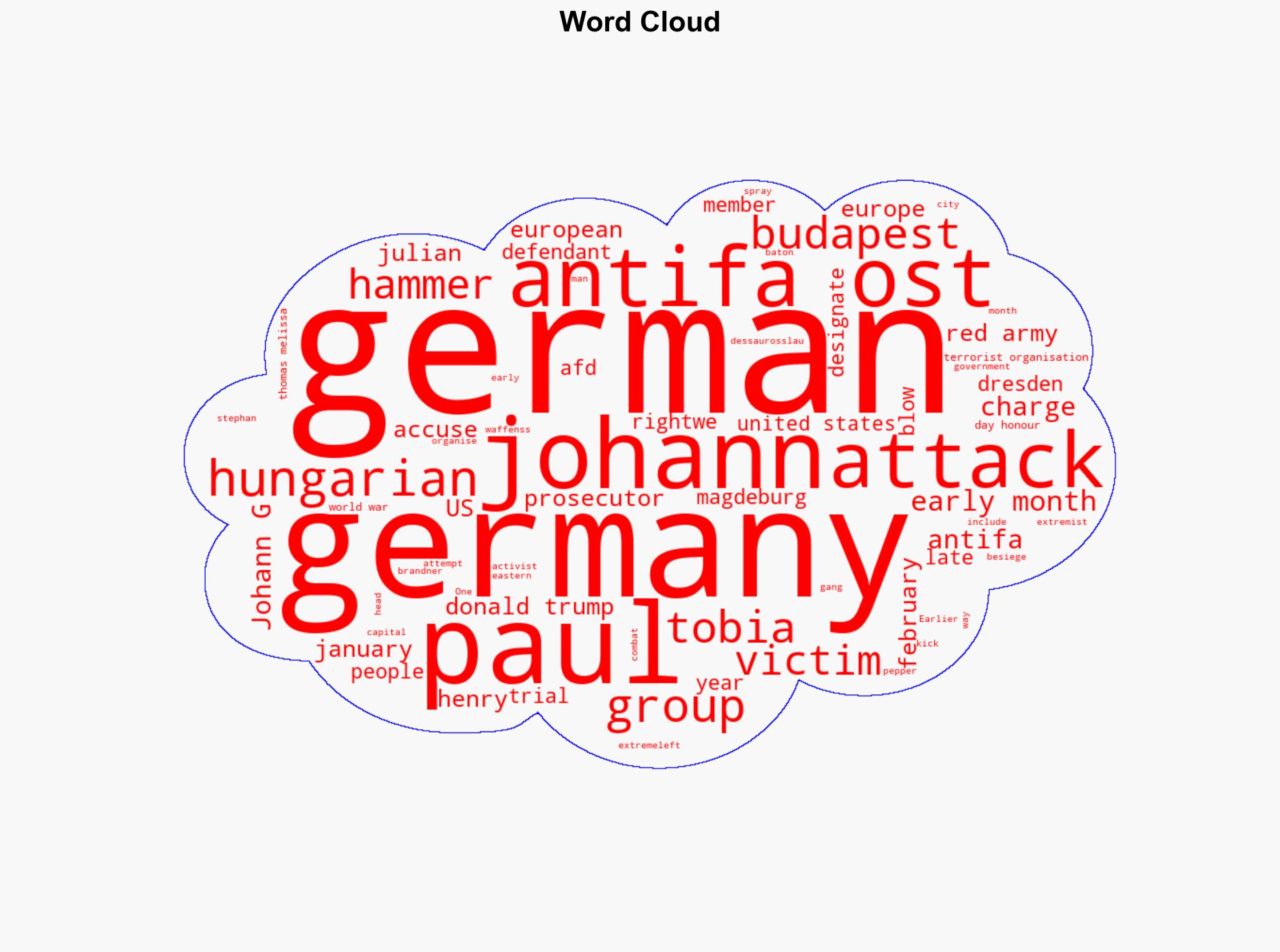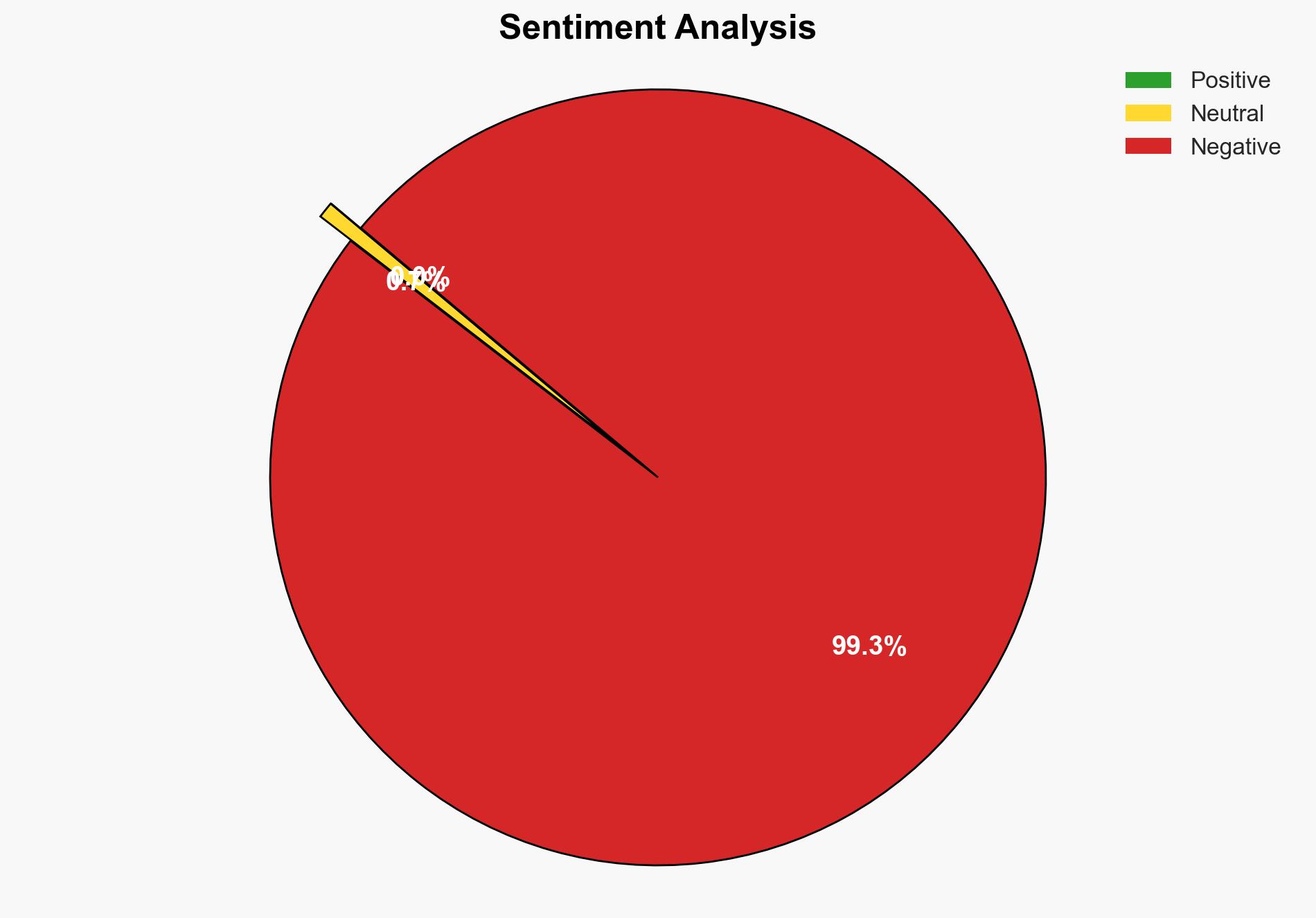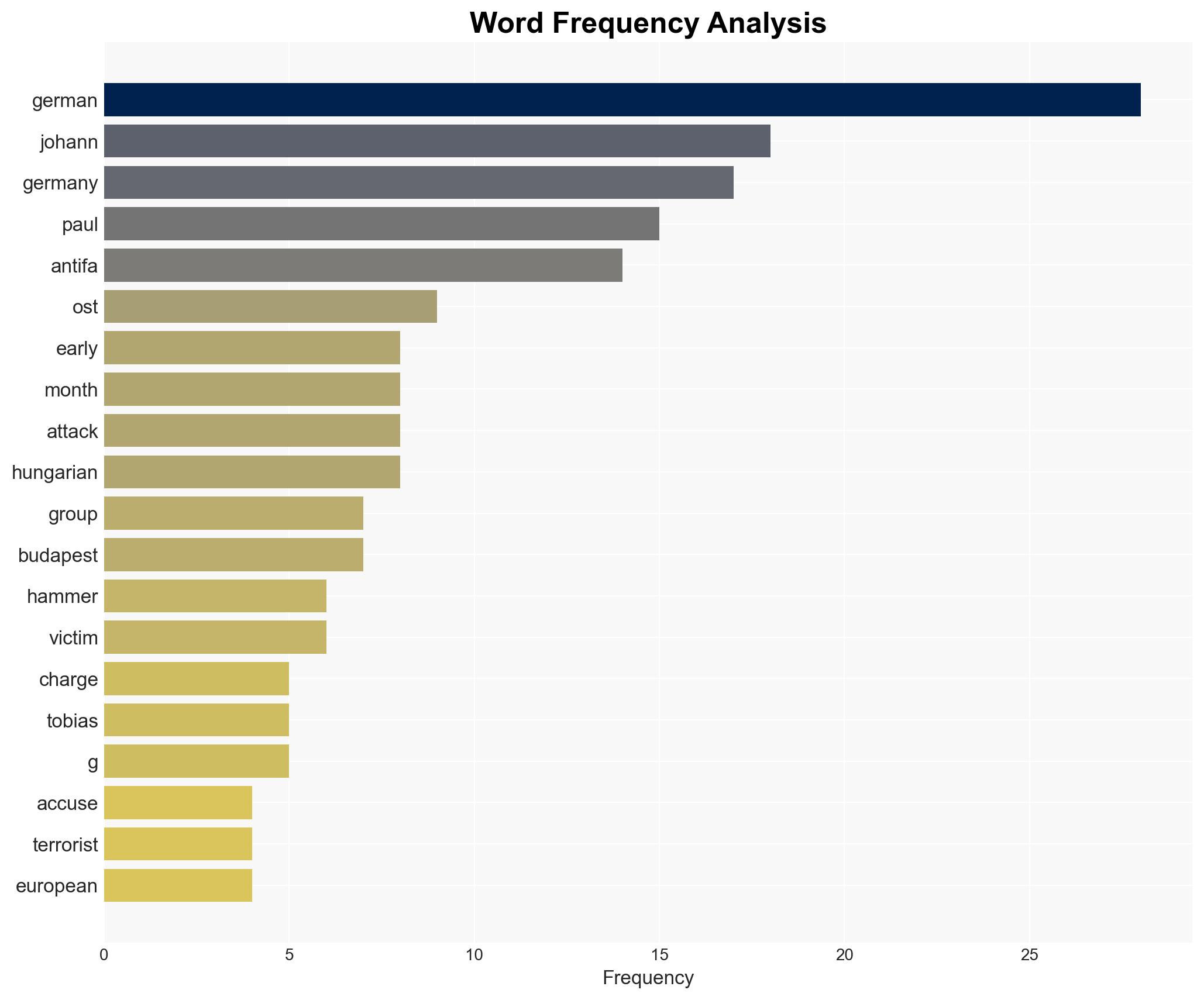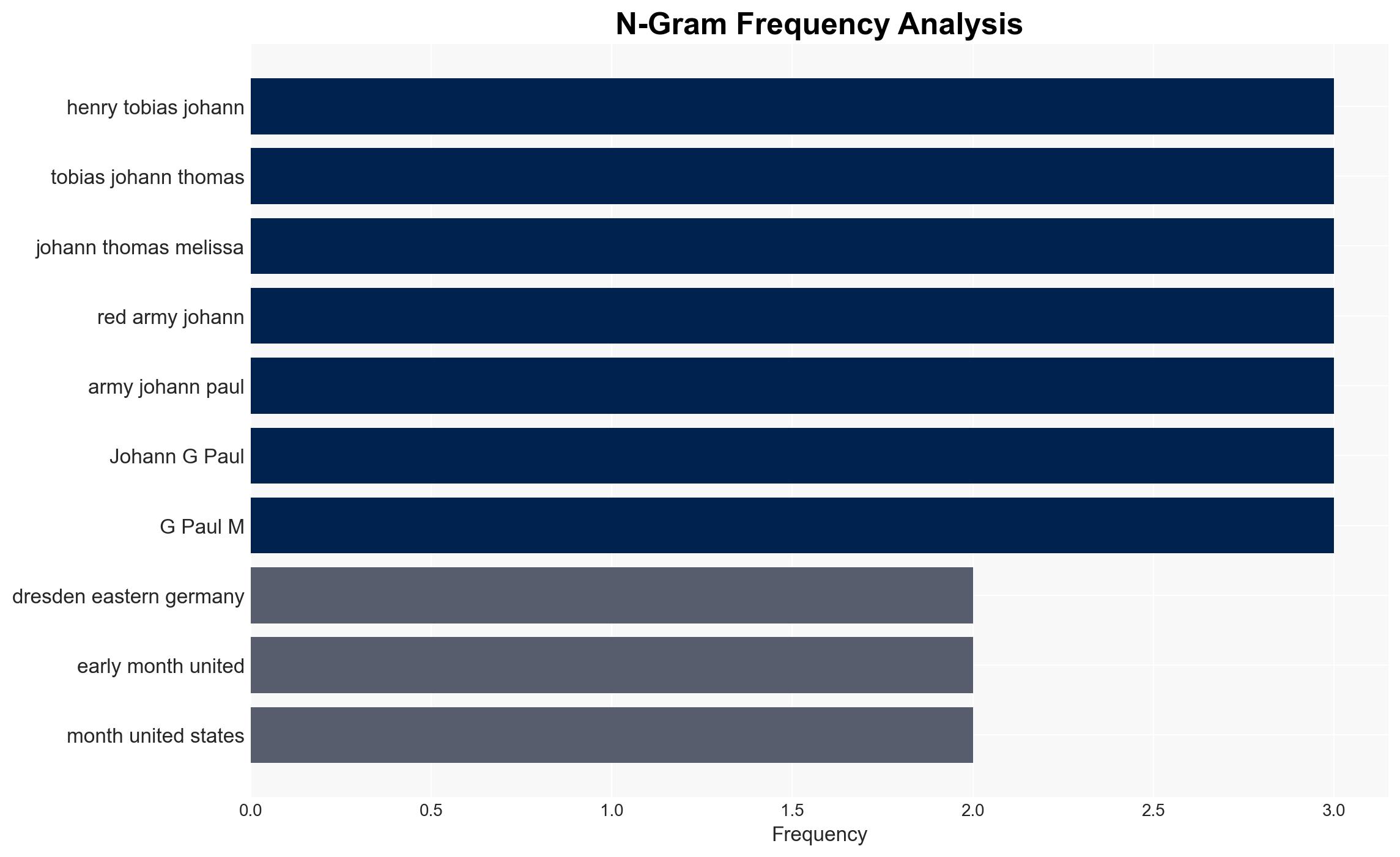German ‘hammer gang’ trial for seven accused of extreme-left violence
Published on: 2025-11-25
AI-powered OSINT brief from verified open sources. Automated NLP signal extraction with human verification. See our Methodology and Why WorldWideWatchers.
Intelligence Report:
1. BLUF (Bottom Line Up Front)
The trial of the ‘hammer gang’ in Germany highlights the ongoing threat of extreme-left violence in Europe, particularly by groups like Antifa Ost. The most supported hypothesis is that this trial will lead to increased scrutiny and potential legal actions against similar groups in Germany and possibly across Europe. Confidence Level: Moderate. Recommended action includes enhancing intelligence-sharing mechanisms within Europe to monitor and counteract extreme-left activities.
2. Competing Hypotheses
Hypothesis 1: The trial will result in significant legal and political actions against extreme-left groups in Germany, leading to a decrease in their activities.
Hypothesis 2: The trial will have limited impact on extreme-left activities, as these groups will adapt and continue their operations clandestinely.
Hypothesis 1 is more likely due to the international attention and pressure following the U.S. designation of Antifa Ost as a terrorist organization, which could influence German policy and enforcement actions.
3. Key Assumptions and Red Flags
Assumptions include the belief that legal actions will deter future violence and that international designations will influence domestic policies. Red flags include the potential for these groups to operate under different names or structures, making them harder to track. There is also a risk of overestimating the impact of legal actions on deeply rooted ideological movements.
4. Implications and Strategic Risks
Politically, there could be increased polarization within Germany, with right-wing parties like AfD potentially gaining support by advocating for stronger measures against left-wing extremism. Economically, there may be increased costs associated with heightened security measures. Informationally, there is a risk of propaganda from both sides exacerbating tensions. Cyber threats could emerge as these groups might resort to digital activism.
5. Recommendations and Outlook
- Enhance intelligence-sharing frameworks within the EU to monitor extreme-left activities.
- Increase funding for counter-terrorism units focused on domestic extremism.
- Engage in community outreach programs to prevent radicalization.
- Best-case scenario: Successful prosecutions lead to a decline in extreme-left violence.
- Worst-case scenario: Retaliatory attacks increase, leading to further instability.
- Most-likely scenario: Short-term decrease in activities, with potential resurgence under new guises.
6. Key Individuals and Entities
Henry A, Tobias E, Johann G, Thomas J, Melissa K, Paul M, Julian W – Defendants in the trial.
Antifa Ost – The group under scrutiny.
Stephan Brandner – AfD party member advocating for stronger measures.
7. Thematic Tags
Structured Analytic Techniques Applied
- ACH 2.0: Reconstruct likely threat actor intentions via hypothesis testing and structured refutation.
- Indicators Development: Track radicalization signals and propaganda patterns to anticipate operational planning.
- Narrative Pattern Analysis: Analyze spread/adaptation of ideological narratives for recruitment/incitement signals.
- Cognitive Bias Stress Test: Structured challenge to expose and correct biases.
Explore more:
Counter-Terrorism Briefs ·
Daily Summary ·
Support us





